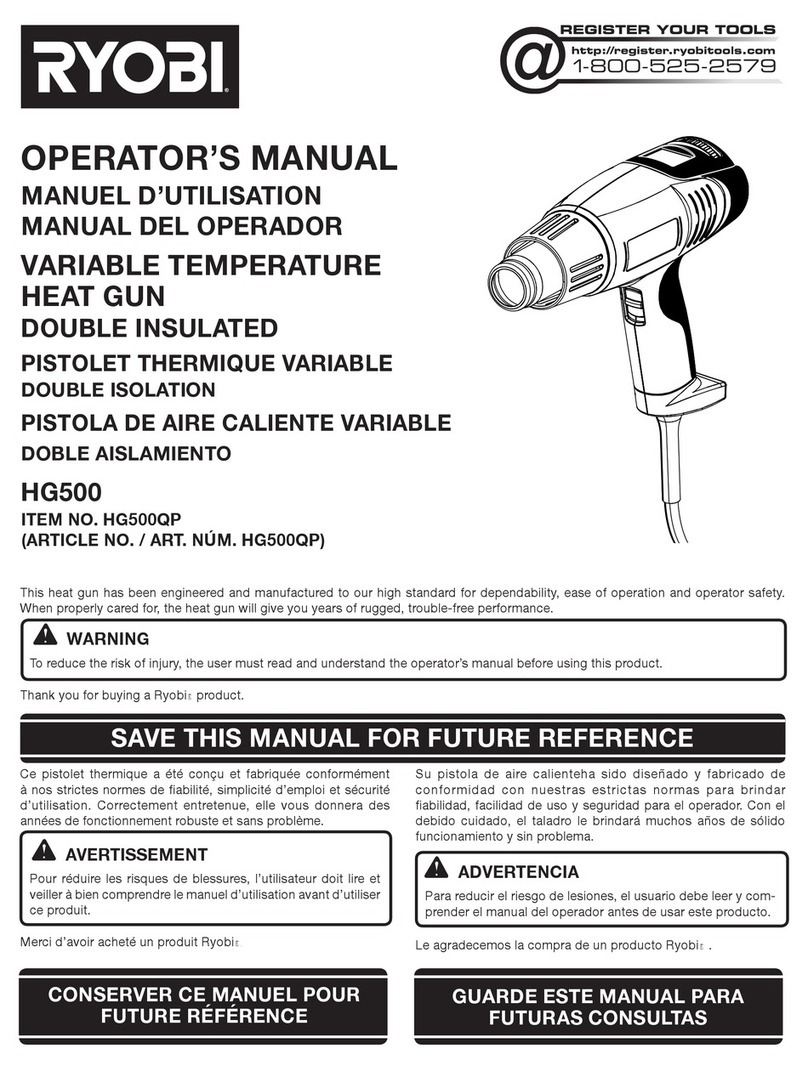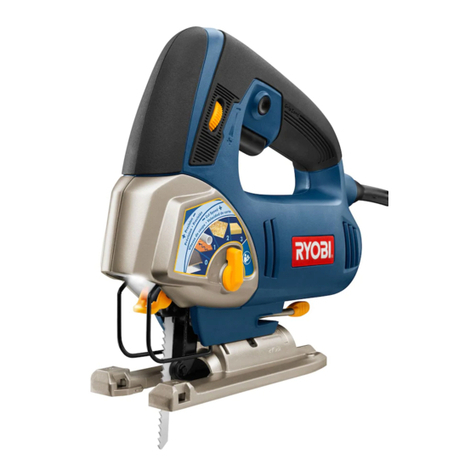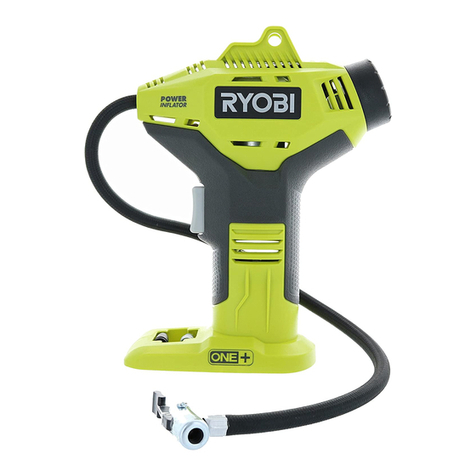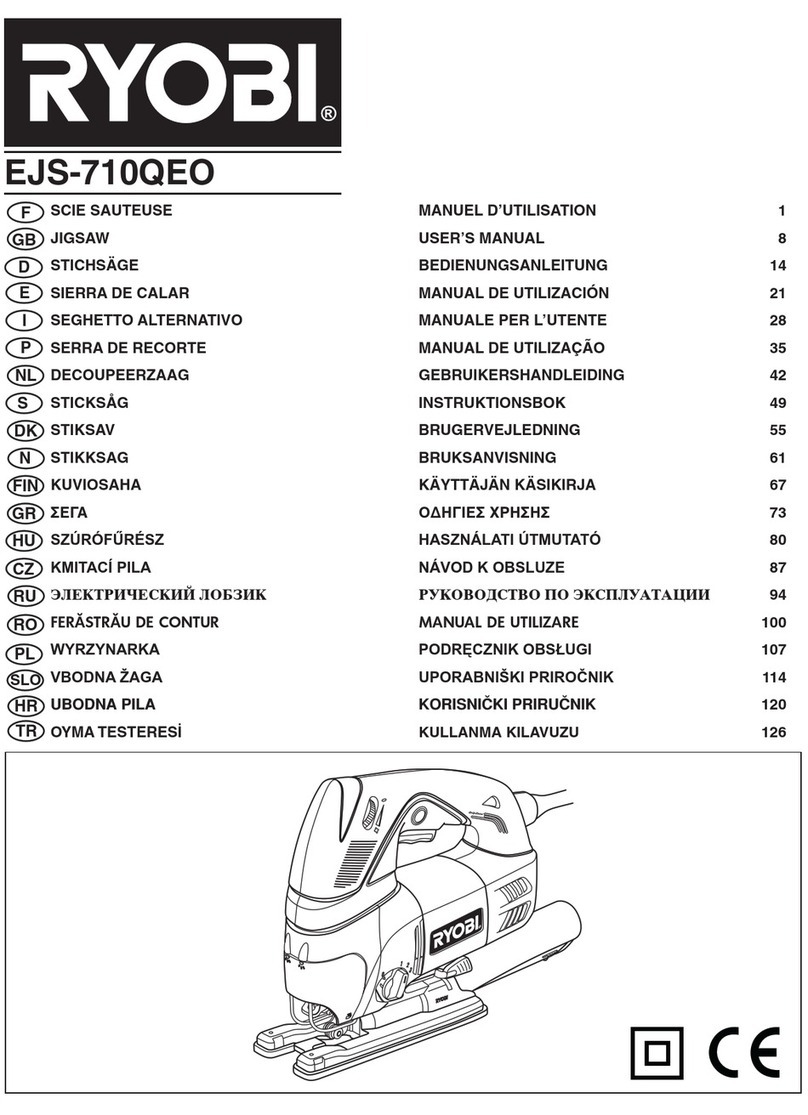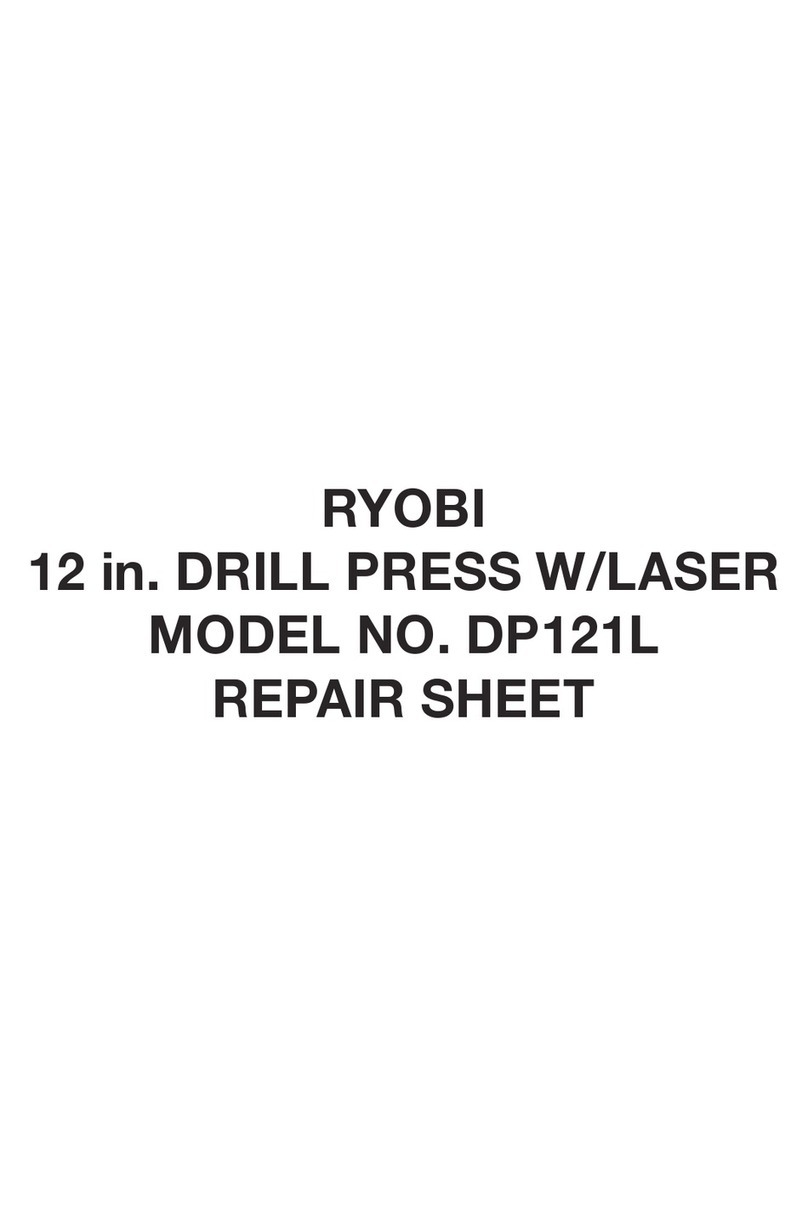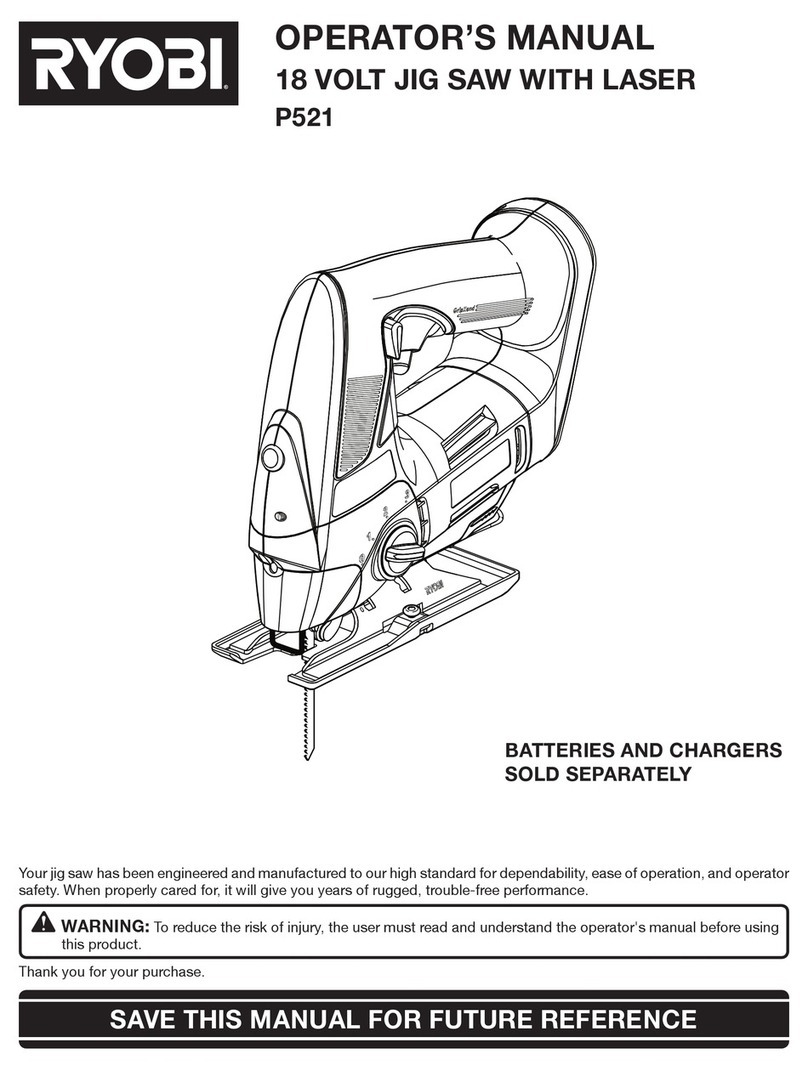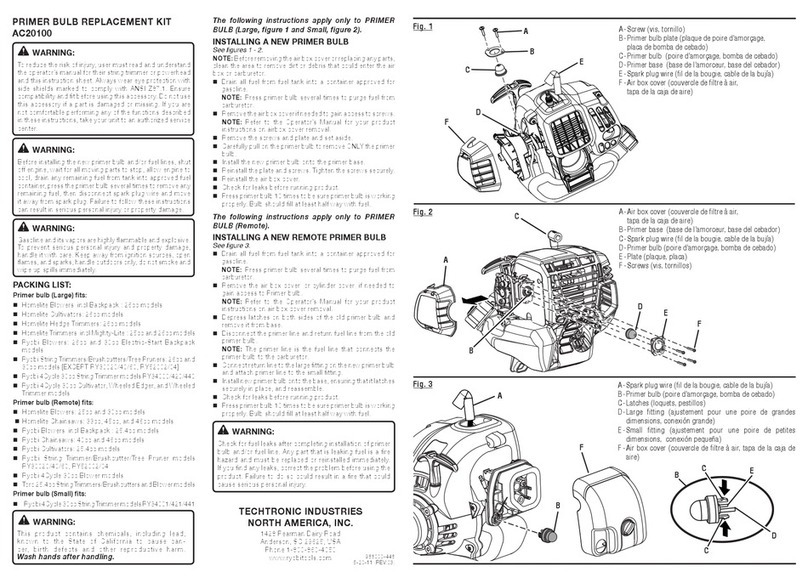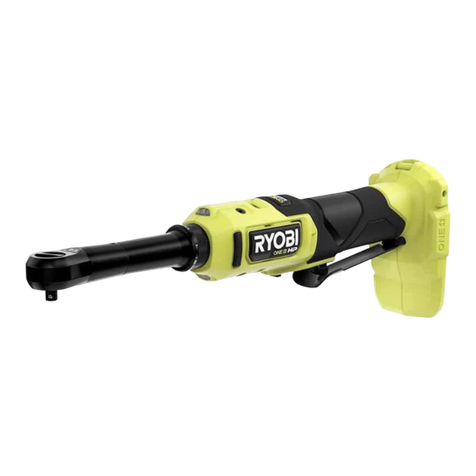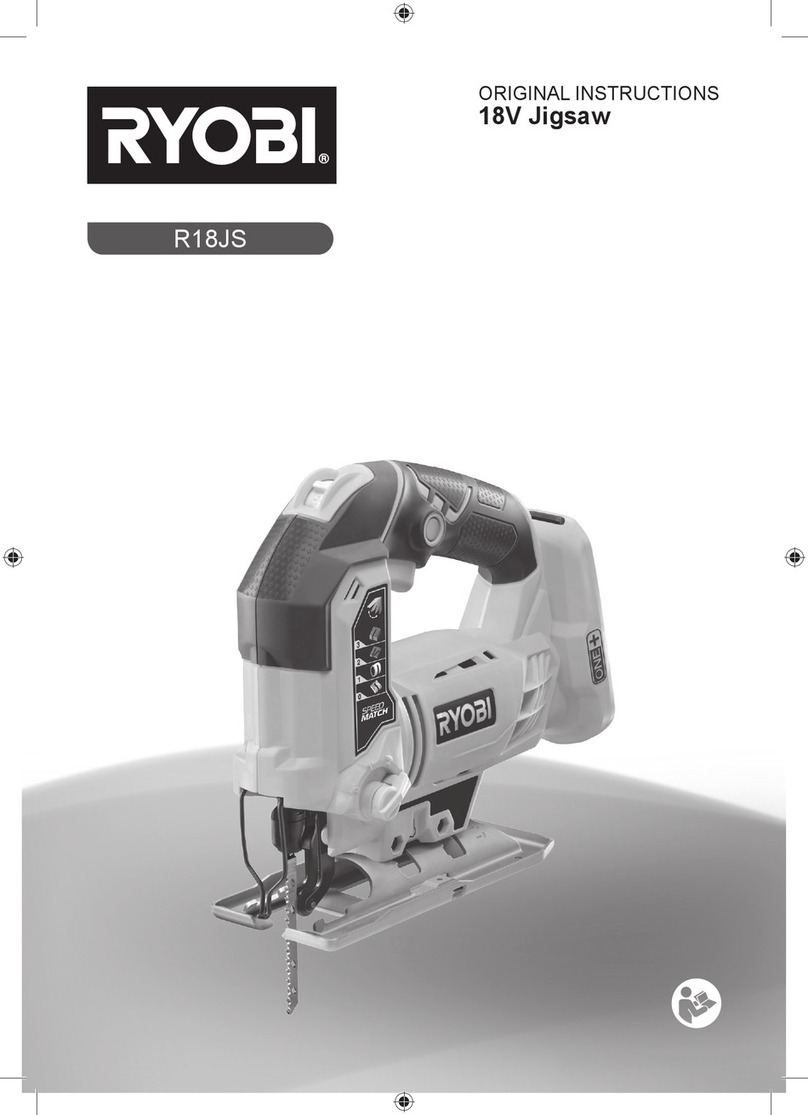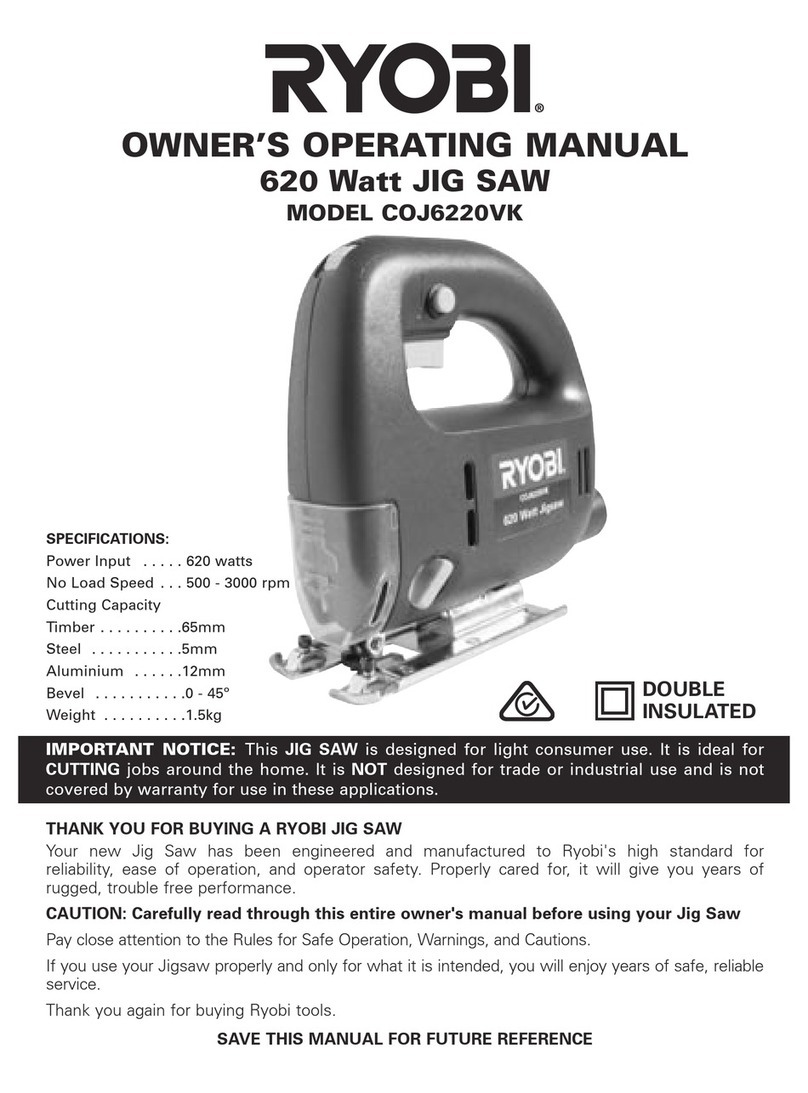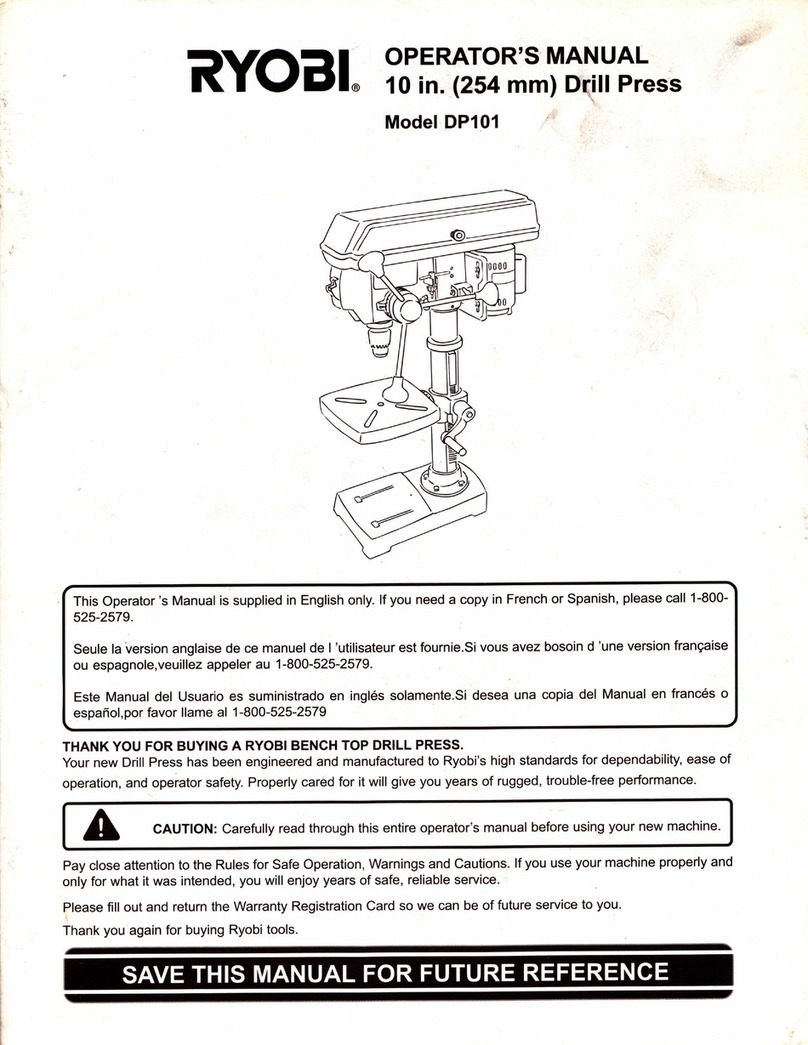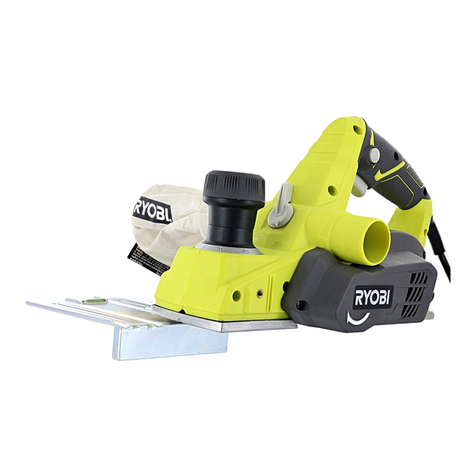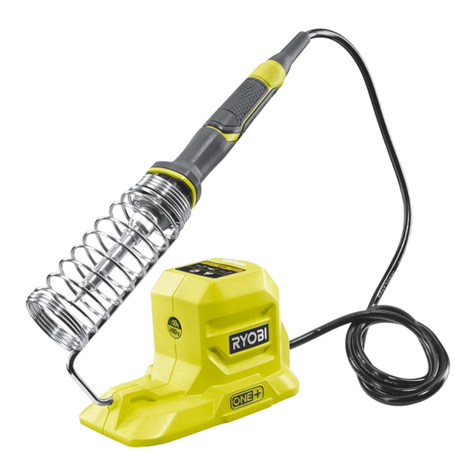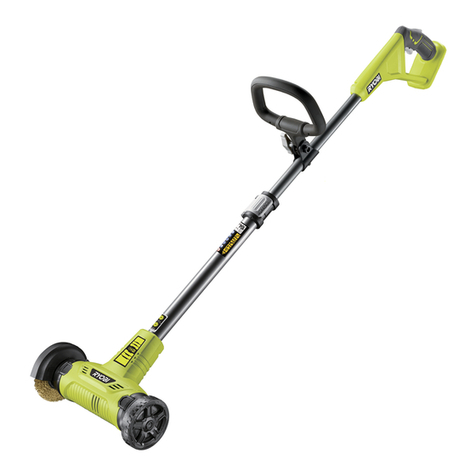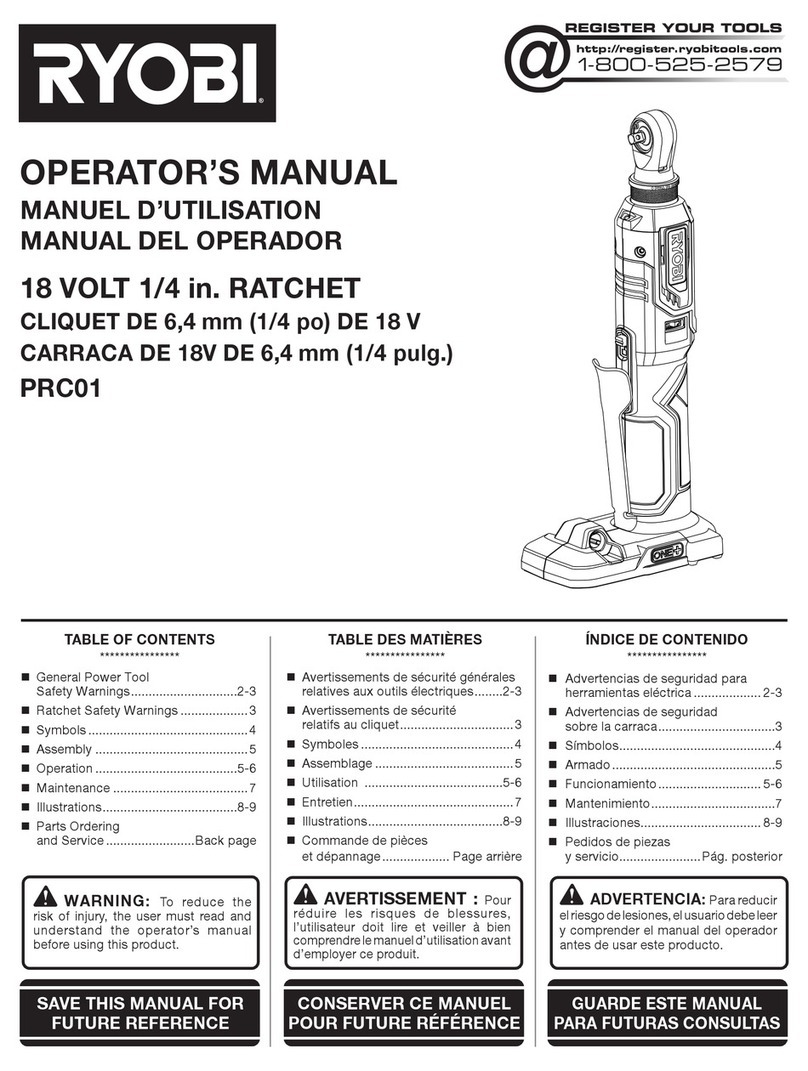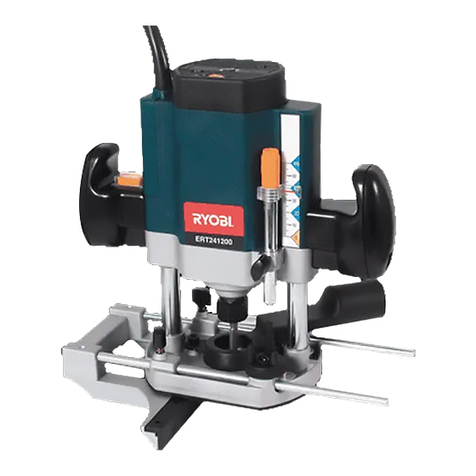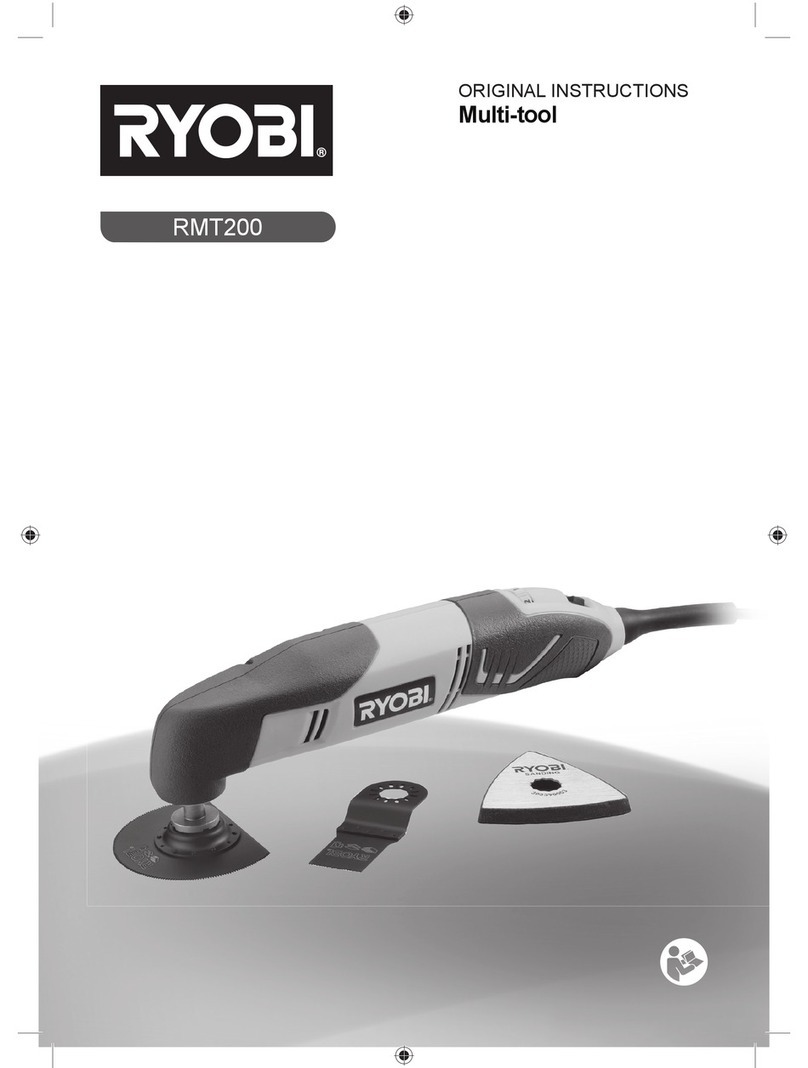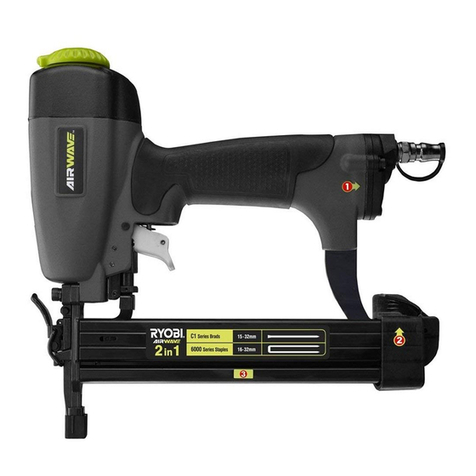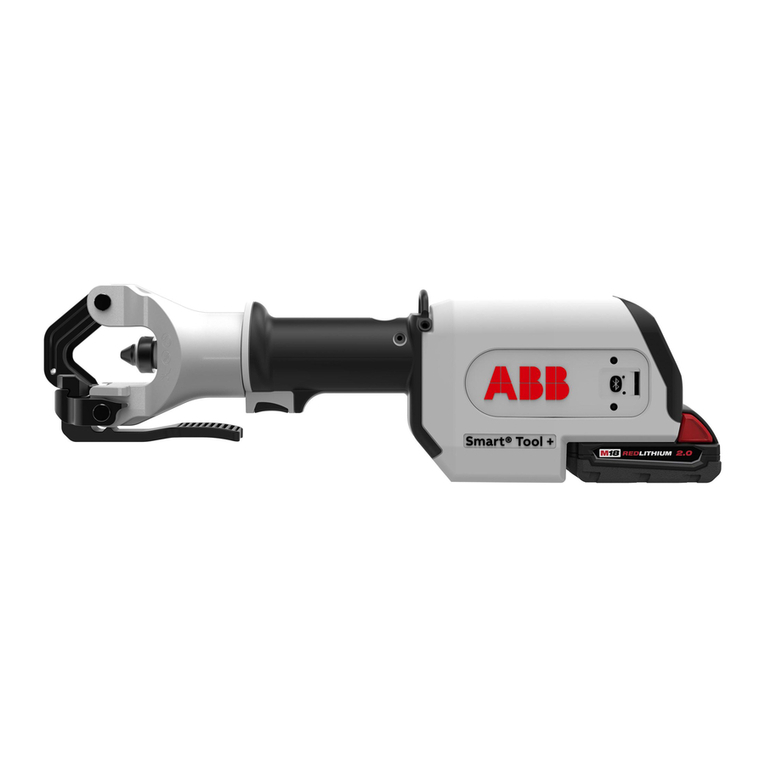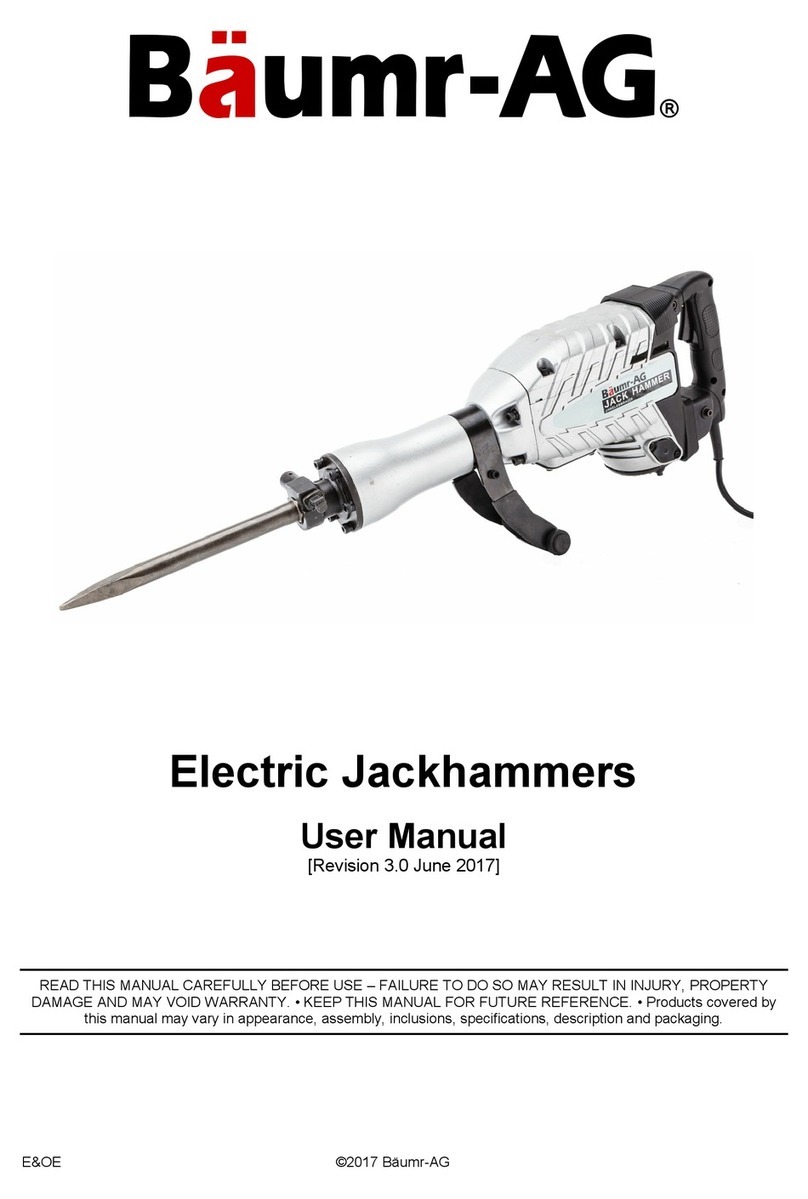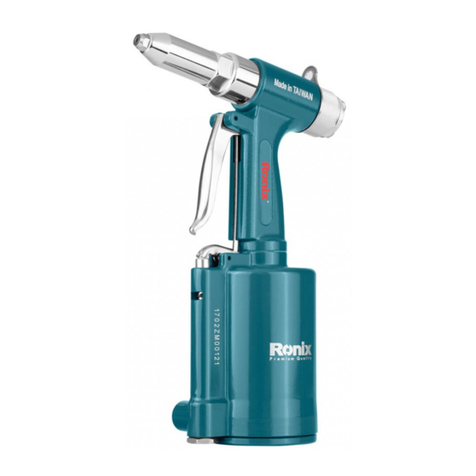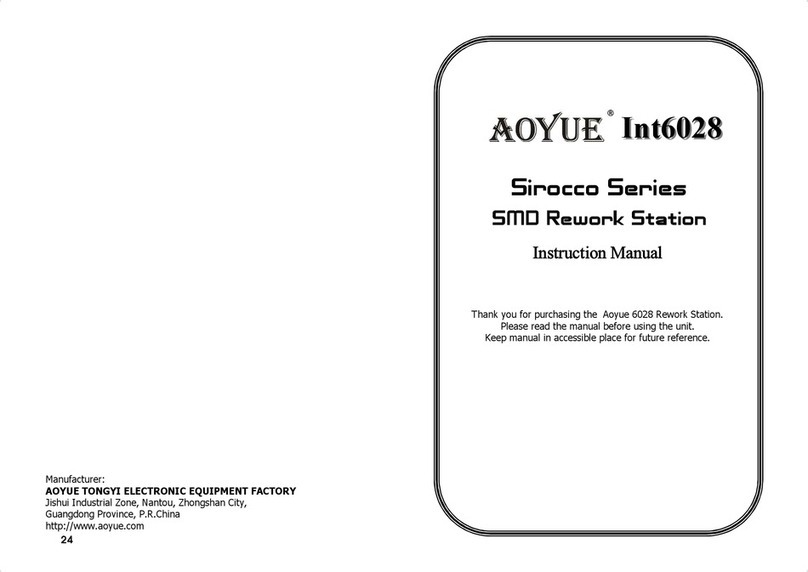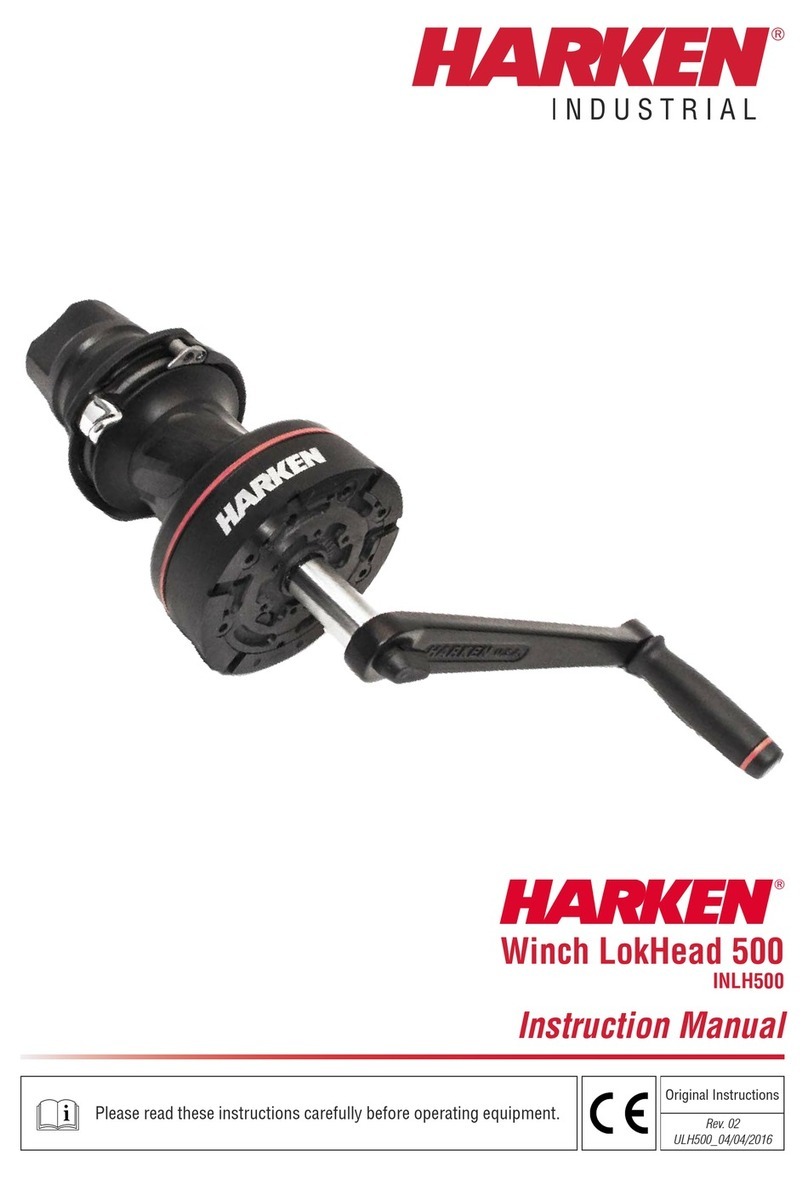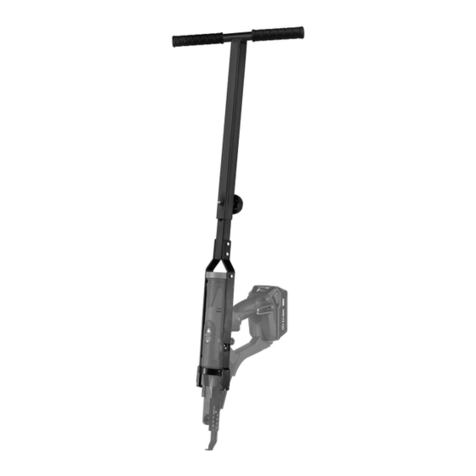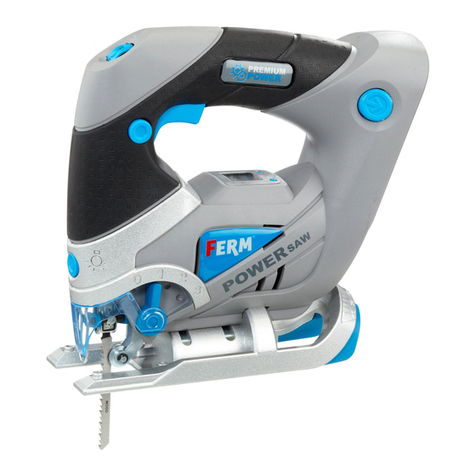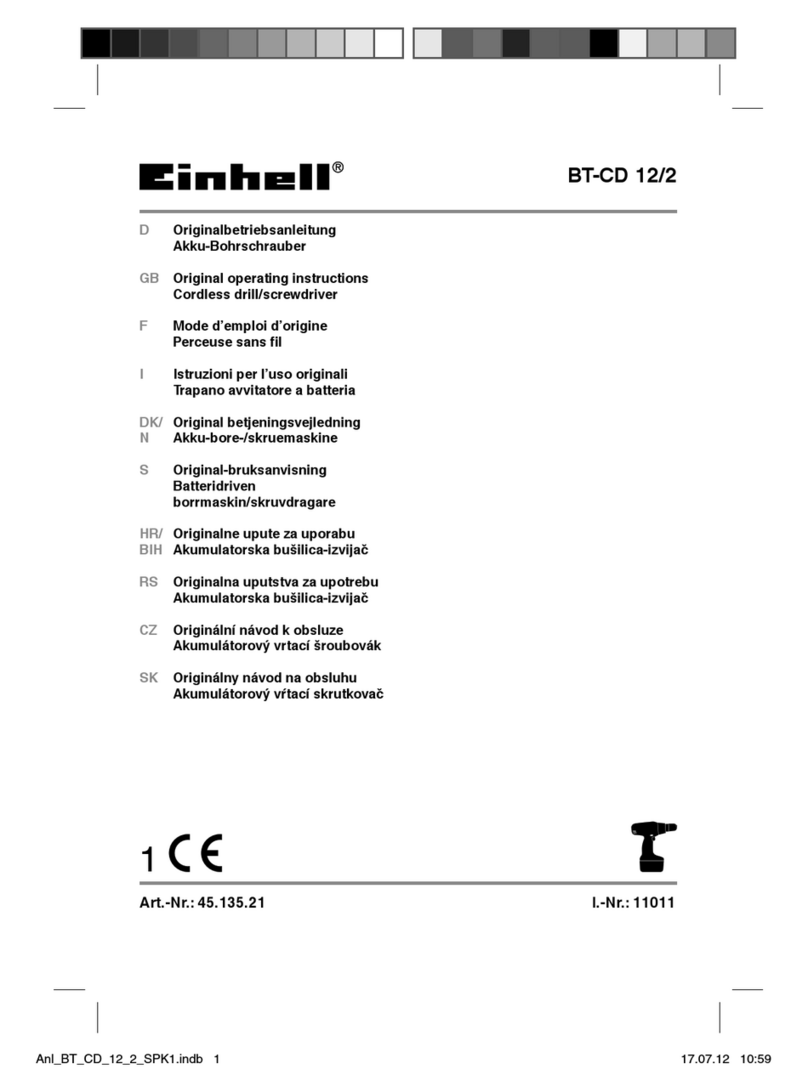
Page 4
■NEVER USE IN AN EXPLOSIVE ATMOSPHERE.
Normal sparking of the motor could ignite flammable
liquids, gases, or fumes.
■KEEP HANDLES DRY, CLEAN, AND FREE FROM
OIL AND GREASE. Always use a clean cloth when
cleaning. Never use brake fluids, gasoline, petroleum-
based products or any strong solvents to clean your
tool.
■STAY ALERT. Watch what you are doing and use
commonsense.Donotoperatetoolwhenyouaretired.
Do not rush.
■CHECK DAMAGED PARTS. Before further use of the
tool, a guard or other part that is damaged should be
carefully checked to determine that it will operate
properly and perform its intended function. Check for
alignment of moving parts, binding of moving parts,
breakage of parts, mounting, and any other conditions
that may affect its operation. A guard or other part that
isdamagedshouldbe properly repaired orreplaced by
anauthorizedservicecenterunlessindicatedelsewhere
in this operator's manual.
■DO NOT USE TOOL IF SWITCH DOES NOT TURN IT
ONAND OFF.Havedefectiveswitchesreplacedbyan
authorized service center.
■DRUGS, ALCOHOL, MEDICATION. Do not operate
tool while under the influence of drugs, alcohol, or any
medication.
■CUTTING INTO ELECTRICAL WIRING IN WALLS
ANDFLOORSCANCAUSETHEBLADEANDMETAL
PARTS TO BECOME ELECTRICALLY LIVE. Do not
touch metal parts when cutting into walls and floors;
grasponlytheinsulatedhandle(s)providedonthetool.
Make sure hidden electrical wiring, water pipes, and
mechanical hazards are not in the blade path when
cutting into a wall or floor.
■AVOID CUTTING NAILS. Inspect for and remove all
nails from lumber before cutting.
IMPORTANT SAFETY RULES FOR BATTERY
TOOLS
■Batterytoolsdonothavetobepluggedintoanelectrical
outlet; therefore, they are always in an operating
condition.Beawareofpossiblehazardswhencarrying
your battery tool, when making adjustments to it, or
when changing accessories.
■USE ONLY THE CHARGER AND BATTERY
RECOMMENDED FOR YOUR BATTERY TOOL. Do
notsubstituteanyothercharger.Useofanothercharger
could cause batteries to explode causing possible
serious injury.
WARNING:
Never use a battery that has been dropped or received a
sharp blow. A damaged battery is subject to explosion.
Properlydisposeofadroppedbatteryimmediately.Failure
toheedthis warning canresult in seriouspersonal injury.
■DO NOT PLACE BATTERY TOOLS OR THEIR
BATTERIESNEARFIREORHEAT.Theymayexplode.
WARNING:
Batteries vent hydrogen gas and can explode in the
presence of a source of ignition, such as a pilot light. To
reduce the risk of serious personal injury, never use any
cordless product in the presence of open flame. An
exploded battery can propel debris and chemicals. If
exposed, flush with water immediately.
WARNING:
A damaged battery is subject to explosion. To avoid
serious personal injury, properly dispose of a damaged
battery.
■DO NOT CHARGE BATTERY TOOL IN A DAMP OR
WET LOCATION.
■Yourbatterytoolshouldbechargedinalocationwhere
the temperature is more than 50°F but less than
100°F. Do not store outside or in vehicles.
■Underextremeusageortemperatureconditions,battery
leakage may occur. If liquid comes in contact with your
skin, wash immediately with soap and water, then
neutralize with lemon juice or vinegar. If liquid gets in
your eyes, flush them with clean water for at least 10
minutes, then seek immediate medical attention.
■If carrying your battery tool at your side, make sure it is
not running and your finger is not on the switch. Avoid
accidental starting.
■SECURE WORK before applying power. NEVER hold
workpiece in your hand or across your legs.
■WHEN SERVICING USE ONLY IDENTICAL
REPLACEMENT PARTS.
RULES FOR SAFE OPERATION (Continued)
